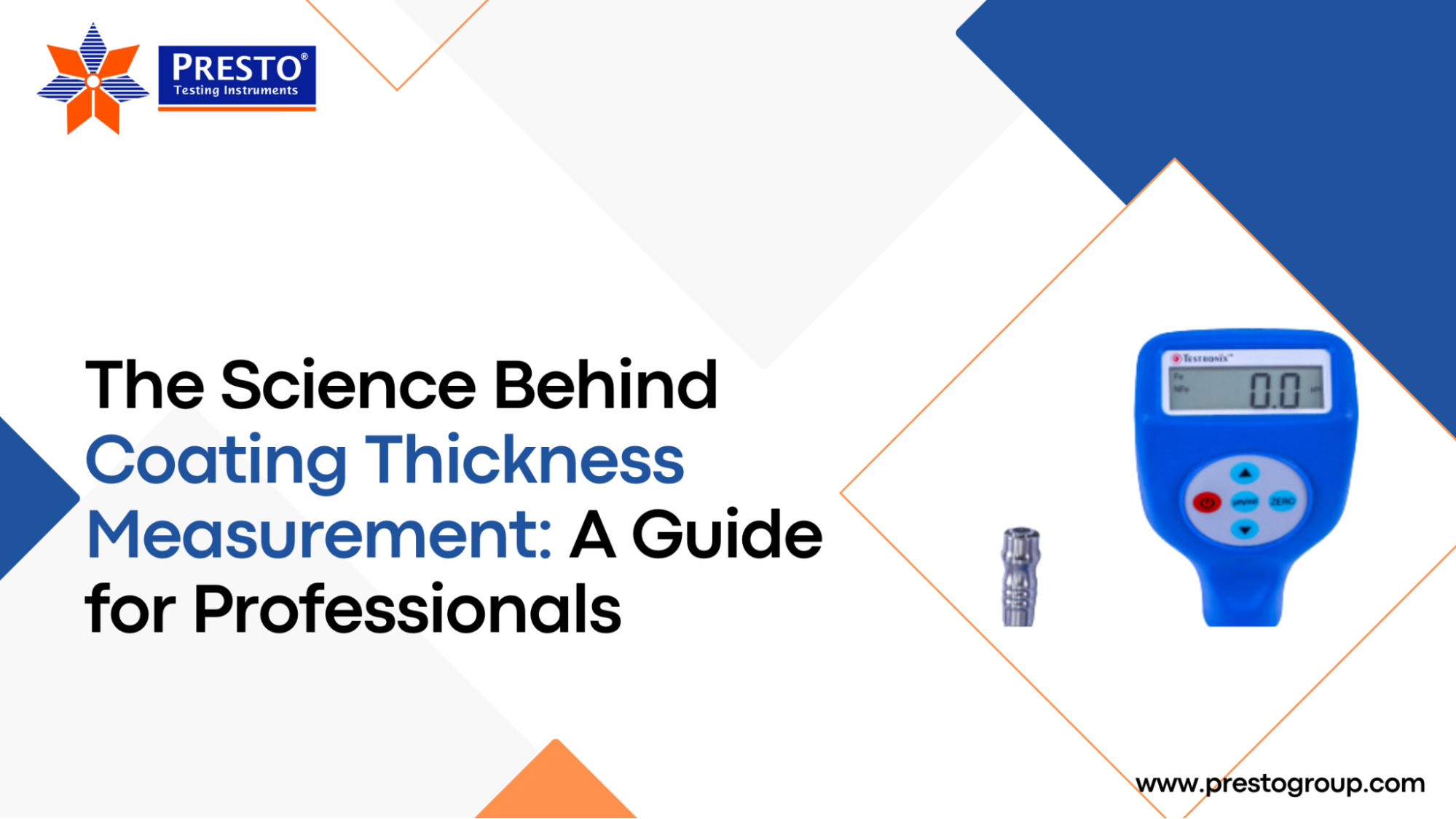In many manufacturing, chemical engineering, and quality assurance companies, the measure of a coat's thickness in metal processing can be measured highly accurately. Thickness gauges measuring non-magnetic coatings on a magnetic metal substrate are handheld precision instruments. A very important measurement tool in protecting materials and enforcing quality control.
This blog presents the working principle, measurement method, and advantage of thickness measurer, such as an ultrasonic thickness measurement gauge. It gives professionals in testing and manufacturing industries some technical information.
Coating Thickness Gauges or thickness measurement instrument
thickness measurement instruments are used to measure the coating thickness applied to different substrates. It provides quality products that meet the relevant industry standards with efficient use of materials.
Important Features
-
Magnetic induction and eddy current analysis for thickness measurement.
-
It supports the one point and two point calibration method for greater accuracy.
-
Measurement in mile (mil) units and micrometer (µm) units.
-
It has a power voltage indicator that shows the value of the battery level.
-
Produces a beep sound for its working condition.
-
It does automatic-shut-off when in inactivity and also switch-off manually
-
It possesses zero-point calibration through a negative display function.
-
It uses very little power, making it work longer.
Eddy current generated Soft iron core on probe
How to Use a Coating Thickness Gauge
Any good thickness measuring device can only provide accurate measurements if it works as it should. Here is how:
1. Calibration of the Gauge
- Mount the sample on a zero plate for reading reset.
- Use single-point or two-point calibration to take it up a notch
2. Measuring Coating Thickness
- Align the probe with the coated surface.
- The eddy current generation is used to determine the dry film thickness of the item.
- Repeat several readings at various places for consistency
3. Data Analysis
- Monitor the readings given by the coating gauge.
- It will measure coating according to industrial norms.
Physics Involved in Measuring Thickness Coating
It uses eddy current along with magnetic induction principle. Thus, these physical theories help achieve measurement in non-destructive manners that are quite accurate as well.
Magnetic Induction Probe For Ferrous
It is applied only after coatings are applied on the metals made of steel or ferrous materials.
The substrate's magnetic field produced from the probe disrupts its function.
The amount of movement within the magnetic field is proportional to the coating thickness:
Greater movement → Lesser thickness of coating
Lesser movement → Thicker thickness of coating
These electrical signals derived from such interactions define the coating thickness.
For example, Paint on steel- A ferrous substrate having non-conductive coatings.
B. Eddy Current Probe (For Non-Ferrous Substrates)
Applied on coatings involving non-magnetic metals like aluminium or copper.
The probe generates alternating current, which creates an eddy current in the substrate.
It measures the thickness by observing the movement of eddy currents:
More movement → Less thickness
Less movement → More thickness
Application: Anodising on aluminum.
Coating Thickness Gauge Benefits
- Precision & Conformity: It exhibits precise readouts that play an important role in industrial level applications.
- Non-Destructive Testing: It calculates the coatings without damaging the substrate.
- Efficiency & Speed: It delivers instant readings, which increases the production cycle.
- Cost-Effectiveness: It saves materials from waste and increases quality control.
FAQs
Q1: Can the coating thickness gauge measure wet coatings?
No, an coating thickness gauge only measures the dry film thickness.
Q2: How would I calibrate a coating thickness gauge?
Calibration is done in a zero-plate reference setup and either using single-point calibration or two point calibration to shift the measurement ranges.
Q3: Which industry sectors make uses of coating thickness gauges?
Some of them include the industries of automobile manufacture, aerospace fields, metal production, construction site, and a manufacturing industry altogether .
Q4: What is the difference between magnetic induction and eddy current probes?
Magnetic Induction Probe: It measures the non-magnetic coatings over ferrous metals.
Eddy Current Probe: This determines the non-conductive coatings over non-ferrous metals.
The coating thickness gauge is one of the most fundamental measuring devices among an industrialist's tool box. Its speed, accuracy, and non-destructive analysis on coating thickness is very indispensable within quality control as well as within material protection. Proper usage with the device under magnetic induction principles and eddy current will help in getting valid and reliable outputs.
A business or professional requiring an effective tool for thickness measurements would consider acquiring a coating thickness gauge that promises accuracy, high productivity, and compliance with various industry standards.
Looking for the best thickness measuring device price? Get high-quality, precision-engineered testing instruments from Presto. Call +91-9210 903 903 or email info@prestogroup.com today!
